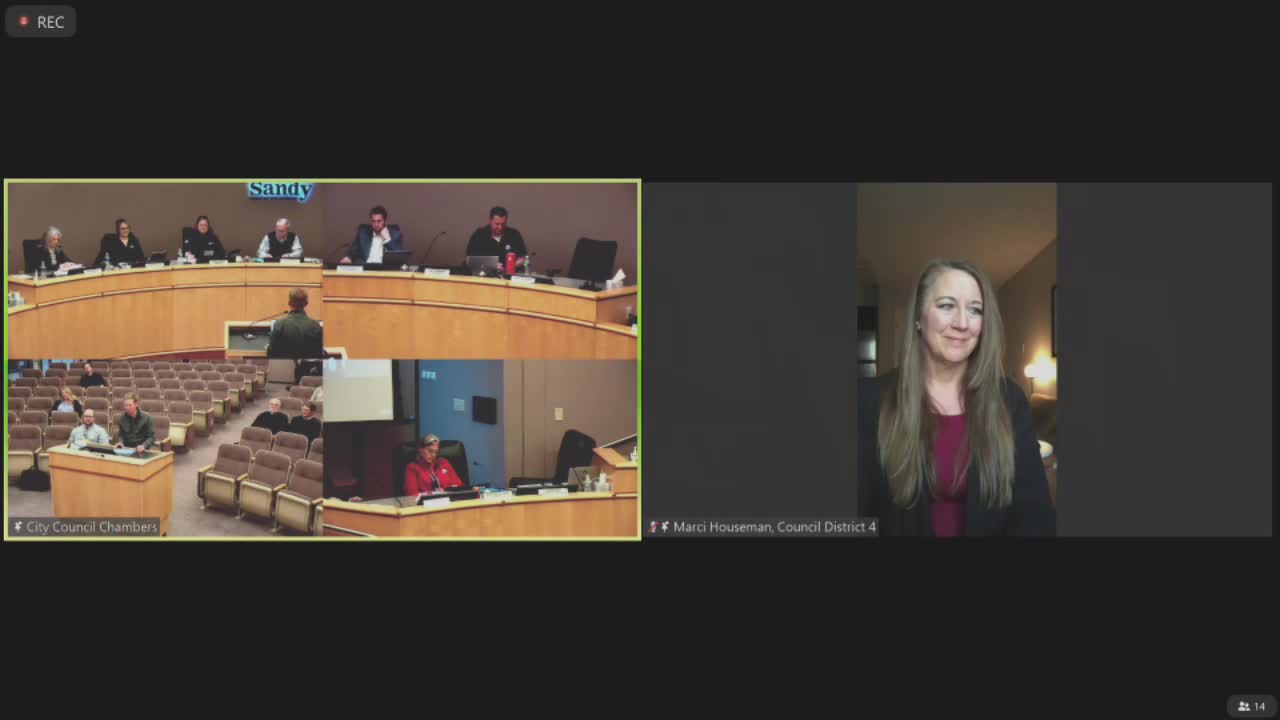Community rallies to support vulnerable families in crisis
April 02, 2024 | Sandy City Council, Sandy, Salt Lake County, Utah

This article was created by AI summarizing key points discussed. AI makes mistakes, so for full details and context, please refer to the video of the full meeting. Please report any errors so we can fix them. Report an error »

During a recent Sandy City Council meeting, community leaders and representatives from various organizations gathered to discuss the allocation of Community Development Block Grant (CDBG) funds for the upcoming fiscal year. The meeting highlighted the critical role of local nonprofits in providing essential services to vulnerable populations, particularly low-income families and individuals facing homelessness.
A representative from a nonprofit architecture firm emphasized the importance of community support, sharing personal experiences of receiving help during a family medical crisis. The firm has been active in providing emergency home repairs and accessibility modifications for low-income families in Salt Lake County since the 1970s. They expressed gratitude for Sandy City's continued funding, which enables them to assist residents in maintaining their homes and communities.
Corin Crow, Senior Director of Operations and Development at Habitat for Humanity, outlined the organization's three main pillars: building homes for low-income families, operating a home improvement thrift store, and expanding their critical home repair program. Crow highlighted the importance of these repairs in allowing families to age in place safely and comfortably.
Mike Young, Division Director of Crisis Services for The Road Home, reported on the success of their Medically Vulnerable People (MVP) program, which provides shelter and support for aging adults experiencing homelessness. Young noted that the program has already helped numerous individuals transition to permanent housing, showcasing the effectiveness of collaboration with Sandy City.
Antoinette from Senior Charity Care shared the impact of last year's funding, which facilitated a combined vision and dental clinic for seniors. She requested additional funding to expand their services, emphasizing the need for continued support to assist more residents.
Reverend Dr. James Wakefield discussed a program aimed at helping youth aging out of foster care, noting an impressive success rate of 86% for participants who secure employment or education after leaving the program. He urged the council to consider expanding this initiative to other counties in Utah.
Council members expressed their support for the various programs and acknowledged the challenges of securing adequate funding. They emphasized the importance of these organizations in addressing homelessness and supporting low-income families in the community. The council's deliberations underscored a collective commitment to enhancing the quality of life for Sandy City residents through strategic funding and partnerships.
A representative from a nonprofit architecture firm emphasized the importance of community support, sharing personal experiences of receiving help during a family medical crisis. The firm has been active in providing emergency home repairs and accessibility modifications for low-income families in Salt Lake County since the 1970s. They expressed gratitude for Sandy City's continued funding, which enables them to assist residents in maintaining their homes and communities.
Corin Crow, Senior Director of Operations and Development at Habitat for Humanity, outlined the organization's three main pillars: building homes for low-income families, operating a home improvement thrift store, and expanding their critical home repair program. Crow highlighted the importance of these repairs in allowing families to age in place safely and comfortably.
Mike Young, Division Director of Crisis Services for The Road Home, reported on the success of their Medically Vulnerable People (MVP) program, which provides shelter and support for aging adults experiencing homelessness. Young noted that the program has already helped numerous individuals transition to permanent housing, showcasing the effectiveness of collaboration with Sandy City.
Antoinette from Senior Charity Care shared the impact of last year's funding, which facilitated a combined vision and dental clinic for seniors. She requested additional funding to expand their services, emphasizing the need for continued support to assist more residents.
Reverend Dr. James Wakefield discussed a program aimed at helping youth aging out of foster care, noting an impressive success rate of 86% for participants who secure employment or education after leaving the program. He urged the council to consider expanding this initiative to other counties in Utah.
Council members expressed their support for the various programs and acknowledged the challenges of securing adequate funding. They emphasized the importance of these organizations in addressing homelessness and supporting low-income families in the community. The council's deliberations underscored a collective commitment to enhancing the quality of life for Sandy City residents through strategic funding and partnerships.
View full meeting
This article is based on a recent meeting—watch the full video and explore the complete transcript for deeper insights into the discussion.
View full meeting

